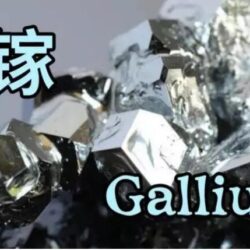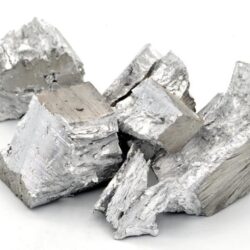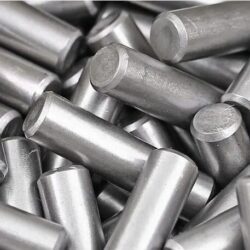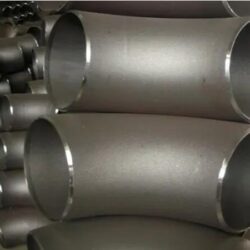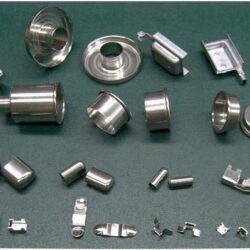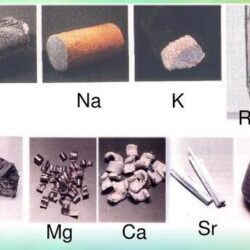Metals are opaque, lustrous elements that are good conductors of heat and electricity. Most metals are malleable and ductile and are, in general, denser than the other elemental substances.

Pure metals are generally solid (except mercury) at room temperature, with metallic luster (i.e. strong reflection of visible light). Most of them are excellent conductors of electricity and heat, with ductility, high density and high melting point The earth’s metal resources are widely distributed in the crust and oceans. Except for a few inactive metals such as gold and silver, which exist in the form of elemental substance, the rest exist in the form of compound Metals exist widely in nature and are widely used in daily life. They are very important and widely used in modern industry.
Introduction to metals
A metal is a material that, when freshly prepared, polished, or fractured, shows a lustrous appearance, and conducts electricity and heat relatively well. Metals are typically malleable (they can be hammered into thin sheets) or ductile (can be drawn into wires). A metal may be a chemical element such as iron; an alloy such as stainless steel; or a molecular compound such as polymeric sulfur nitride.
Because the electrons of metals tend to separate, they have good conductivity, and metal elements usually have positive valence in compounds. However, when the temperature is higher, the resistance will increase due to the thermal shock of the nucleus. The connection between metal molecules is a metal bond, so the connection can be reestablished by changing the position at will, which is also the reason for the good extensibility of metals.
In nature, most metals exist in the combined state, and a few metals such as gold, silver, platinum and bismuth exist in the free state. Most of the metal minerals are oxides and sulfides, while others are chlorides, sulfates, carbonates and silicates.
The metals are gold, silver, copper, iron, manganese and zinc. At atmospheric pressure and 25 degrees Celsius, all metals except mercury (liquid) are solids. Most of the pure metals are silver (gray) color, only a few are not, such as gold is yellow and red, copper is purplish red. Most of the metal is next to the “item”.

In physics, a metal is generally regarded as any substance capable of conducting electricity at a temperature of absolute zero. Many elements and compounds that are not normally classified as metals become metallic under high pressures. For example, the nonmetal iodine gradually becomes a metal at a pressure of between 40 and 170 thousand times atmospheric pressure. Equally, some materials regarded as metals can become nonmetals. Sodium, for example, becomes a nonmetal at pressure of just under two million times atmospheric pressure.
In chemistry, two elements that would otherwise qualify (in physics) as brittle metals—arsenic and antimony—are commonly instead recognised as metalloids due to their chemistry (predominantly non-metallic for arsenic, and balanced between metallicity and nonmetallicity for antimony). Around 95 of the 118 elements in the periodic table are metals (or are likely to be such). The number is inexact as the boundaries between metals, nonmetals, and metalloids fluctuate slightly due to a lack of universally accepted definitions of the categories involved.
A substance with a positive temperature resistance coefficient is usually defined as a metal. The metal elements are located in the lower left part of the “boron astatine boundary”. There are metal elements in s, P, D and f regions, and all transition elements are metal elements.
In solid metal conductors, there are many free electrons that can move. Although these electrons are not bound to any particular atom, they are bound to the lattice of the metal; Even in the absence of an external electric field, these electrons will still move randomly because of heat. But in a conductor, the average net current is zero. In any time interval, the number of electrons moving from one side of the cross section to the other is equal to the number of electrons moving in the opposite direction.

In astrophysics the term “metal” is cast more widely to refer to all chemical elements in a star that are heavier than helium, and not just traditional metals. In this sense the first four “metals” collecting in stellar cores through nucleosynthesis are carbon, nitrogen, oxygen, and neon, all of which are strictly non-metals in chemistry. A star fuses lighter atoms, mostly hydrogen and helium, into heavier atoms over its lifetime. Used in that sense, the metallicity of an astronomical object is the proportion of its matter made up of the heavier chemical elements.
Structures of Metals
Metals consist of giant structures of atoms arranged in a regular pattern.
The electrons from the outer shells of the metal atoms are delocalised, and are free to move through the whole structure. This sharing of delocalised electrons results in strong metallic bonding.

Such bonds could be formed between metal atoms that have low electronegativities and do not attract their valence electrons strongly. This would allow the outermost electrons to be shared by all the surrounding atoms, resulting in positive ions (cations) surrounded by a sea of electrons (sometimes referred to as an electron cloud).
Although most elemental metals have higher densities than most nonmetals, there is a wide variation in their densities, lithium being the least dense (0.534 g/cm3) and osmium (22.59 g/cm3) the most dense. Magnesium, aluminum and titanium are light metals of significant commercial importance. Their respective densities of 1.7, 2.7 and 4.5 g/cm3 can be compared to those of the older structural metals, like iron at 7.9 and copper at 8.9 g/cm3. An iron ball would thus weigh about as much as three aluminum balls of equal volume.
Nonferrous Metals
The narrow sense of non-ferrous metals, also known as non-ferrous metals, is the general name of all metals except iron, manganese and chromium. In a broad sense, nonferrous metals also include nonferrous alloys. Nonferrous alloy is based on a kind of nonferrous metal (usually more than 50%) and added with one or several other elements.

In 1958, China listed iron, chromium and manganese as ferrous metals, and 64 metals other than iron, chromium and manganese as non-ferrous metals. The 64 nonferrous metals include: aluminum, magnesium, potassium, sodium, calcium, strontium, barium, copper, lead, zinc, tin, cobalt, nickel, antimony, mercury, cadmium, bismuth, gold, silver, platinum, ruthenium, rhodium, palladium, osmium, iridium, beryllium, lithium, rubidium, cesium, titanium, zirconium, hafnium, vanadium, niobium, tantalum, tungsten, molybdenum, gallium, indium, thallium, germanium, rhenium, lanthanum, cerium, praseodymium, neodymium, samarium, europium, gadolinium, terbium, dysprosium, holmium, erbium Thulium, ytterbium, lutetium, scandium, yttrium, silicon, boron, selenium, tellurium, arsenic and thorium.
The strength and hardness of non-ferrous alloys are generally higher than that of pure metals, the resistance is larger than that of pure metals, the temperature coefficient of resistance is smaller, and they have good comprehensive mechanical properties. The commonly used nonferrous alloys are aluminum alloy, copper alloy, magnesium alloy, nickel alloy, tin alloy, tantalum alloy, titanium alloy, zinc alloy, molybdenum alloy, zirconium alloy, etc.
Copper is one of the earliest metal materials used by human beings. Modern nonferrous metals and their alloys have become indispensable structural and functional materials in the fields of machinery manufacturing, construction, electronic industry, aerospace, nuclear energy utilization, etc
Metal Alloys
An alloy is a substance having metallic properties and which is composed of two or more elements at least one of which is a metal. An alloy may have a variable or fixed composition. For example, gold and silver form an alloy in which the proportions of gold or silver can be freely adjusted; titanium and silicon form an alloy Ti2Si in which the ratio of the two components is fixed (also known as an intermetallic compound).

A sculpture cast in nickel silver—an alloy of copper, nickel, and zinc that looks like silver
Most pure metals are either too soft, brittle or chemically reactive for practical use. Combining different ratios of metals as alloys modifies the properties of pure metals to produce desirable characteristics. The aim of making alloys is generally to make them less brittle, harder, resistant to corrosion, or have a more desirable color and luster. Of all the metallic alloys in use today, the alloys of iron (steel, stainless steel, cast iron, tool steel, alloy steel) make up the largest proportion both by quantity and commercial value. Iron alloyed with various proportions of carbon gives low, mid and high carbon steels, with increasing carbon levels reducing ductility and toughness. The addition of silicon will produce cast irons, while the addition of chromium, nickel and molybdenum to carbon steels (more than 10%) results in stainless steels.
Other significant metallic alloys are those of aluminum, titanium, copper and magnesium. Copper alloys have been known since prehistory—bronze gave the Bronze Age its name—and have many applications today, most importantly in electrical wiring. The alloys of the other three metals have been developed relatively recently; due to their chemical reactivity they require electrolytic extraction processes. The alloys of aluminum, titanium and magnesium are valued for their high strength-to-weight ratios; magnesium can also provide electromagnetic shielding.[citation needed] These materials are ideal for situations where high strength-to-weight ratio is more important than material cost, such as in aerospace and some automotive applications.
Alloys specially designed for highly demanding applications, such as jet engines, may contain more than ten elements.
